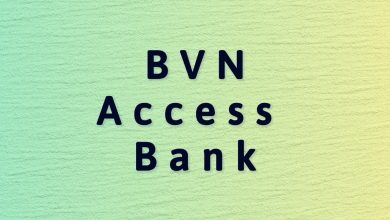KYC Verification: Every Thing You Need To Know
For customers and businesses, the question “What is KYC verification?” has emerged as one of the most crucial. Know Your Customer (KYC) verification has become so important that companies risk fines from regulatory bodies if they don’t follow set guidelines. This post will cover this and other relevant KYC-related queries.
Contents
- 1 KYC verification: what is it?
- 2 Why is KYC verification necessary?
- 3 Why is KYC important?
- 4 How is the KYC verification process carried out?
- 5 KYC Customer Acceptance Policy
- 6 KYC Customer Identification Procedures
- 7 What are the different methods for verifying identity?
- 8 KYC electronic identity verification
- 9 Using KYC to verify customers
KYC verification: what is it?
KYC verification is the process that a corporation uses to confirm the identification of its clients to determine their legitimacy and reliability. It is a component of the company’s customer due diligence structure and evaluates the risks of conducting business with such customers.
KYC verification has grown in importance and is now required for organizations in more traditional industries like eCommerce and gig economy platforms, despite being primarily used by banks, insurance, and finance-related enterprises.
Why is KYC verification necessary?
KYC was created to create a system for tracing money brought into the economy. Some crucial tracking details are the source of the cash, the recipient, the persons involved, and any additional information required based on the case’s particulars. Through monitoring, the authorities can detect and impede illicit activity, safeguarding the interests of the company’s stakeholders.
Know Your Customer (KYC) procedures have been in place since the 1990s, to be exact. But with the increase in identity theft, cyberattacks, and other frauds, they have tightened up.
You can easily recognize your customer as a business owner, and you will know what to do next based on what happens next. Businesses can, for instance, identify offenders or people who are presently on the anti-money laundering watch list or have a history of money laundering. Additionally, they can recognize Politically Exposed Persons (PEP) and take appropriate action in light of their findings. You wouldn’t want to do business with a wanted money launderer, would you, as a business owner?
The Customer Identification Program (CIP) now includes this procedure as a crucial component.
Why is KYC important?
The main goal of KYC is to prevent financial institutions from being utilized as components of money laundering and, perhaps, terrorist operations. However, KYC also helps banks and other financial organizations recognize, evaluate, and understand their customer base to manage the risks involved in conducting business effectively.
The following are some of the most common causes found in today’s business sector for having KYC verification:
- Identity Theft
One of the main issues that KYC addresses is identity theft. In the past, thieves could easily use a false identity and address to deal with financial institutions because there were no effective measures. But when background check technology advanced, criminals had to become smarter and employ carefully designed identity masks to evade detection.
However, modern KYC combines comprehensive digital and physical identity verification to assist financial institutions in spotting identity theft early on. It guarantees that identity cannot be conveniently stolen or used fraudulently.
With KYC, organizations may quickly verify their customers’ identities to evaluate risks and prevent fraudulent accounts from opening.
- Money Laundering
Another significant tactic criminals use to carry out their crimes is money laundering. In essence, the phrase describes the act of transmitting money unlawfully. This covers drugs, narcotics trafficking, human trafficking, and more. To avoid raising any suspicions, criminal organizations utilize phony accounts to store money in the bank and distribute it equally. The funds are subsequently laundered by unauthorized transfers to local or offshore accounts.
An example of this would be the money used to buy gold, jewelry, and artwork that has been stolen. It is possible to legally exchange these items for cash by selling them.
- Funding Terrorism
Following the 9/11 attacks, in which terrorists destroyed America’s Twin Towers, terrorist financing came to the attention of both US and international governments. Cutting off funding for terrorism was one of the main strategies used to combat terrorist attacks. It is well known that citizens of the country financed many terrorist attacks in question.
As with 9/11, it was eventually found that agencies and individuals were financing the act with money made in the United States. In essence, the funds were created by domestic companies and subsequently moved to terrorists’ shell accounts. The government identified the owners of these accounts and stopped further money laundering activities thanks to KYC.
KYC can prevent you from doing business with the wrong clients as a business owner.
- Financial Fraud
KYC has also significantly contributed to reducing financial fraud. In basic terms, it refers to financial deception that goes beyond money laundering and financing terrorism. Before KYC was implemented, criminals were accustomed to creating dummy accounts and using false identification to conduct illegal transactions. Such a person could ask for a loan through a fake account, obtain it, and then take the money back while keeping the account inactive.
Because of this, banks are now recognized for having the strictest KYC procedures.
How is the KYC verification process carried out?
Although it was developed primarily for banks and financial organizations, it is now utilized by various businesses. This is especially true for online companies. The majority of businesses create their KYC processes using one of the following methods:
- Risk Management
- Monitoring Transactions
- Acceptance Policy for Customers
- Customer Identification procedure
KYC procedures in organizations typically comprise the following:
- Gathered, examined, and confirmed clients’ identification documents.
- Matching identity documents produced by international agencies with global watch lists for terrorism and money laundering.
- Identify and analyze risks connected with company client transactions using historical data and behavioral analysis.
- Observing consumer conduct during transactions and comparing it to expected behaviors.
KYC Customer Acceptance Policy
The most fundamental component of KYC, the client acceptance policy, establishes the guidelines for a customer’s interactions with a firm. The policy specifies the minimal needs and additional paperwork that the client must submit.
These consist of identification documents (IDs), proof of address, photo identification, and other documents the organization requests as identification.
KYC Customer Identification Procedures
Following a customer’s acceptance of the offered KYC policy, the organization will use the documents the consumer submitted to identify them. After verification, an account can be opened for financial purposes. To open such an account, you must meet the following minimal KYC requirements:
- Name
- Address
- Date of birth
- Identification number
However, the information provided is not only limited to these. The following factors determine the precise requirements that a bank lists:
- The type of bank that a consumer wants to open
- The type of bank
- The procedure that banks use to create an account
- The size and clientele of the bank
As part of the KYC procedure, the bank collects and verifies this information promptly. Here is how to get in touch with the top identity verification service. The verification procedure also includes reviewing data from other sources, such as agencies and public databases, to validate the customer’s claims. This assists the organization in meeting KYC and AML regulations.
What are the different methods for verifying identity?
Among the several techniques for verifying identity are:
- ID verification
- Biometric verification
- Address verification
- Face recognition
- Digital ID verification and liveliness checks
At the very least, financial institutions ask to see and confirm government-issued identification documents to establish a person’s legal identity. Driver’s licenses, passports, NINs, BVNs, and more, depending on the country, are a few examples.
These documents should, at the very least, include a picture of the individual and indicate the person’s nationality. The organization may request one or more of these documents. In this manner, any questions from a document can be answered in a supporting document, thereby reducing doubts.
KYC electronic identity verification
Digital identity verification, also known as electronic identity verification (DV), was established to strengthen KYC processes without hard copy documentation. DV now offers some of the safest levels of risk detection and control.
The primary verification technique involves comparing the data supplied by a client with information found in public and government databases and other sources. This speeds up the KYC process and improves customers’ overall experience.
Even though this is slower than outright eIDV, institutions could still run the customer’s credit report and investigate their background.
Institutions use a combination of digital, document, and non-document verification methods to validate identities and provide a more secure KYC procedure.
Using KYC to verify customers
The Customer Identification Program (CIP) is crucial for monitoring business-to-business connections, transactions, and risk assessment. As a small business owner or organization, you can use an excellent identity verification service to investigate every person with whom you do business thoroughly.
You can now onboard clients and complete KYC with just their cell phone numbers. Remember that the phone number should be the same as the NIN and bank account. Collecting their phone numbers, you can use our “Advanced Search ” to obtain further important details, such as their NIN, BVN, and complete information.
Companies and organizations can fully comply with KYC requirements by onboarding consumers using only their phone numbers. This is a far cry from the present practice of using simple user authentication methods, such as OTP and customers’ phone numbers.

